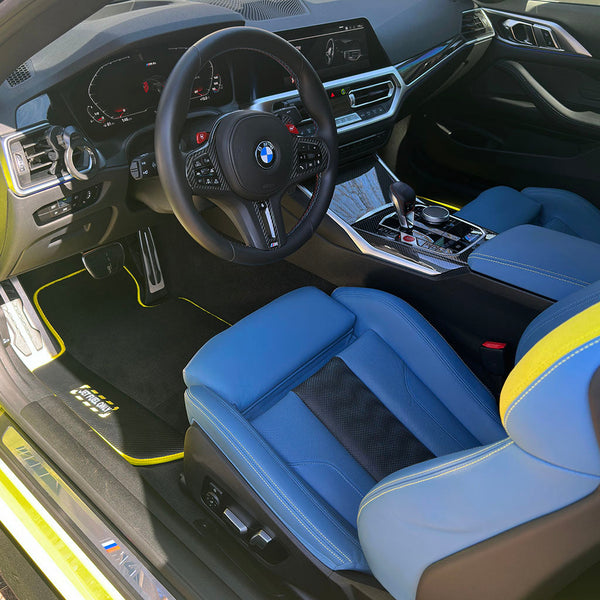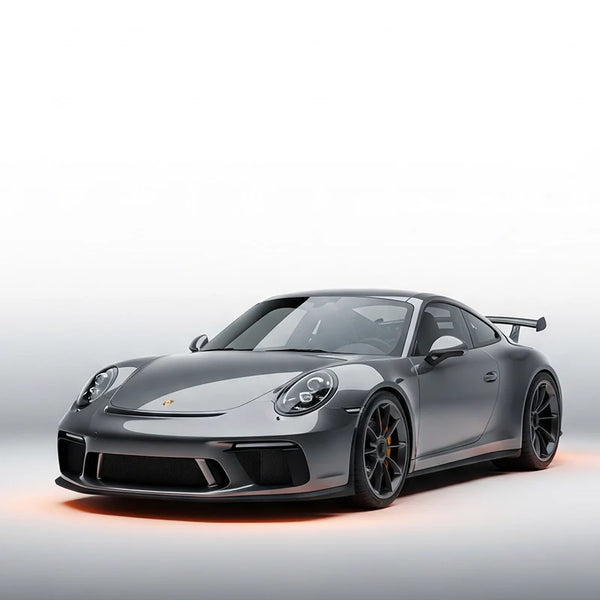History of the Rolls-Royce Ghost: The Modern Gentleman’s Express
I still remember the first time I slipped behind the wheel of a Rolls-Royce Ghost. I’d expected velvet-glove luxury and gentle wafting, sure, but I wasn’t prepared for how eager it felt to be driven. Not chauffeured—driven. That’s the trick of the Rolls-Royce Ghost: it’s the quietest way to go very quickly, with just enough theater to make every errand feel like a red-carpet arrival.
Why the Rolls-Royce Ghost Exists
Back in 2009, Rolls-Royce needed something more contemporary than the grand, ceremonial Rolls-Royce Phantom. Enter the Ghost, named for the legendary Silver Ghost of the early 1900s—a car famed for reliability and refinement when most automobiles squeaked like carts. The new Ghost was pitched as the driver’s Rolls: tighter, lighter on its feet (relatively), and styled for people who might prefer Amalfi Coast switchbacks over Buckingham Palace driveways.
First Generation Rolls-Royce Ghost (2009–2020): The Quiet Rebel
From launch, the first-gen Rolls-Royce Ghost made a point: yes, it was serene, but it also hustled. The 6.6-liter twin-turbo V12 (563 hp, 605 lb-ft) worked with an 8-speed automatic to serve up a 0–60 mph time around 4.7 seconds—hilarious when you consider the car’s lounge-like demeanor. I remember the first time I floored it onto the motorway; the horizon arrived with the sort of urgency that made my coffee slightly nervous.
Key to the Ghost’s charm was its air suspension and adaptive damping, which flattened out nasty urban potholes in a way that made bad roads feel like mere rumors. A few owners I’ve chatted with loved how it dials out fatigue on long hauls—nice trick for a “driver’s Rolls.”
- 6.6L twin-turbo V12: 563 hp, 605 lb-ft
- 0–60 mph: low-5s to high-4s depending on spec
- ZF 8-speed with satellite-aided shifting in later years
- Adaptive air suspension for that “magic carpet” ride
By the mid-cycle “Series II” update, the Ghost sharpened its suit: revised headlights, better infotainment (still very BMW in its logic), and incremental suspension tuning. If you’ve lived with one, you’ll know the infotainment is the only bit that occasionally breaks the spell—functional, but not as bespoke as the cabin it lives in.
Second Generation Rolls-Royce Ghost (2021–present): The Calm After Perfection
Then came the new Ghost, and Rolls-Royce practically started over. Built on the brand’s “Architecture of Luxury” aluminum spaceframe, it borrows philosophy from the latest Phantom and Cullinan but shrinks it into something more personal. The engine is now a 6.75-liter twin-turbo V12 (still a gentleman’s 563 hp; Black Badge models get 592 hp), and the torque swells to a delicious 627 lb-ft. 0–60? Around 4.6 seconds, accompanied by a murmur and a distant whoosh.
I noticed right away how clean the cabin feels—acoustically and visually. Rolls actually reduced sound deadening in a few places because it was “too quiet,” which sounds absurd until you realize they wanted a hint of “life” in the cabin. On battered country lanes, the Planar Suspension system (think clever dampers, road-scanning cameras, and a trick upper wishbone damper) works like a soothing white noise machine for your spine. Four-wheel steering shrinks the car in tight city streets. It’s uncannily easy to place, even when you’re trying not to scuff a 21-inch wheel outside that tiny sushi spot.
Rolls-Royce Ghost Design Notes: Understated Theater
The Ghost’s design is quietly dramatic. The bodywork is disciplined, the grille is more modest than the Phantom’s, and the lighting signatures give just enough jewelry without drifting into bling. Inside, the illuminated fascia (800+ “stars” twinkling in the dash) is pure modern Rolls whimsy. The leather? Feels like the inside of a handmade glove. The steering wheel rim is thin by modern standards, which I adore; it makes gentle inputs feel…gentler.
Driving the Rolls-Royce Ghost: Real-World Impressions
On a rainy week in the Cotswolds, I tried it on rough roads that would make lesser sedans squeak. The Ghost sailed, unbothered, quiet enough that you can hear your kids argue about the aux cord in the back. The brakes have a soft initial bite—you drive this car with calm intent, not stabby inputs. And the way it meters out torque low in the revs makes it feel like you’re surfing a tide rather than revving an engine. Honestly, I wasn’t sure at first if it would feel too insulated; it doesn’t. There’s a quiet conversation between you and the car, not a wall of silence.
Rolls-Royce Ghost vs. The Alternatives
Is it worth stepping up from a premium luxury sedan to a full Rolls-Royce experience? Depends on what you value: the Ghost trades tech razzle-dazzle for timelessness and tactile serenity. Here’s how it stacks up with rivals.
| Model | Powertrain | Horsepower | 0–60 mph | Base Price |
|---|---|---|---|---|
| Rolls-Royce Ghost | 6.75L TT V12 | 563 hp (592 hp BB) | ~4.6 s | ~$350,000+ |
| Rolls-Royce Phantom | 6.75L TT V12 | 563 hp | ~5.1 s | ~$495,000+ |
| Bentley Flying Spur (V8) | 4.0L TT V8 | 542 hp | ~4.0 s | ~$220,000+ |
| Mercedes-Maybach S 580 | 4.0L MHEV V8 | 496 hp | ~4.7 s | ~$200,000+ |
Think of the Flying Spur as the extrovert athlete, the Maybach as the tech-forward cocoon, and the Phantom as the rolling cathedral. The Ghost splits the difference: a driver’s Rolls with nearly Phantom-level serenity in a more discreet suit.
Living With a Rolls-Royce Ghost
A couple of owners told me they use their Ghosts more than expected—school runs, airport dashes, even ski weekends. The trunk will swallow two big cases and a pair of soft bags; there’s no hatchback flexibility, obviously, but you’d be surprised how much fits. Fuel economy is…optimistic, but if you’re shopping here, you know the deal. Running costs are softened by the fact that the car rarely strains; it’s like driving in slippers most of the time, so components lead an easy life.
- Cabin silence that reduces long-drive fatigue
- Four-wheel steering makes city parking less heart-stopping
- Infotainment is solid but not flashy (some menus still feel a touch BMW)
- Rear-seat comfort is superb; add the “Serenity” spec and nobody will want to leave
Rolls-Royce Ghost: The Timeline At A Glance
- 2009: First-gen Ghost debuts; V12 power, “magic carpet” ride, driver-focused ethos.
- 2014: Series II update with fresher styling and improved infotainment.
- 2021: Second-gen Ghost on the aluminum “Architecture of Luxury,” with Planar Suspension and four-wheel steering.
- 2022+: Black Badge Ghost adds a sharper edge: 592 hp, darker trim, a hint more attitude.
Rolls-Royce Ghost vs. Phantom: Which Rolls Is “Right”?
The Rolls-Royce Phantom is the flag-bearer, the car people notice from three blocks away. The Rolls-Royce Ghost is for those who like the experience just as much—but prefer fewer necks craning at the valet. If you plan to sit in the rear most of the time, Phantom. If you’ll do the driving and want agility with your hush, Ghost.
What’s Not Perfect?
No car is. The infotainment interface, while reliable, can feel a step behind the latest gesture-controlled, OLED-filled rivals. The steering, on-center, is intentionally light, which suits the car but won’t thrill those who want Porsche-like feedback (wrong showroom anyway). And if you’ve got an ear for very specific cabin acoustics, you might notice tire roar on coarse surfaces at certain speeds—but it’s minor, and likely more about the tires than the car.
Final Word: Why the Rolls-Royce Ghost Endures
Across two generations, the Rolls-Royce Ghost has quietly rewritten the rules for a luxury sedan. It’s modern without trend-chasing, swift without showboating, and opulent without shouting about it. If you want a premium sedan that still makes every journey feel like an occasion—whether that’s a black-tie gala or a milk run at midnight—the Ghost is the one that understands the assignment.
FAQs: Rolls-Royce Ghost
How fast is the Rolls-Royce Ghost?
The latest Ghost does 0–60 mph in roughly 4.6 seconds, thanks to a 6.75-liter twin-turbo V12 with 563 hp. The Black Badge variant ups that to 592 hp.
Is the Rolls-Royce Ghost comfortable for daily driving?
Very. The Planar Suspension and road-scanning tech make rough streets feel smooth. Four-wheel steering helps in tight car parks you’d normally avoid with a big sedan.
What is the difference between the Ghost and the Phantom?
The Phantom is larger, more formal, and designed for rear-seat grandeur. The Ghost is more driver-focused, slightly smaller, and easier to live with day-to-day.
What are common options worth getting on a Rolls-Royce Ghost?
Consider the Starlight Headliner, illuminated fascia, rear lounge seating, and yes—those deep lambswool floor mats. If you like a sportier flavor, the Black Badge Ghost adds power and darker detailing.
When did the modern Rolls-Royce Ghost first launch?
The first-generation Ghost debuted in 2009. The second-generation model arrived for 2021 with a new aluminum architecture and updated suspension tech.
Premium Accessories for Mentioned Vehicles
Custom-fit floor mats and accessories for the cars in this article


























